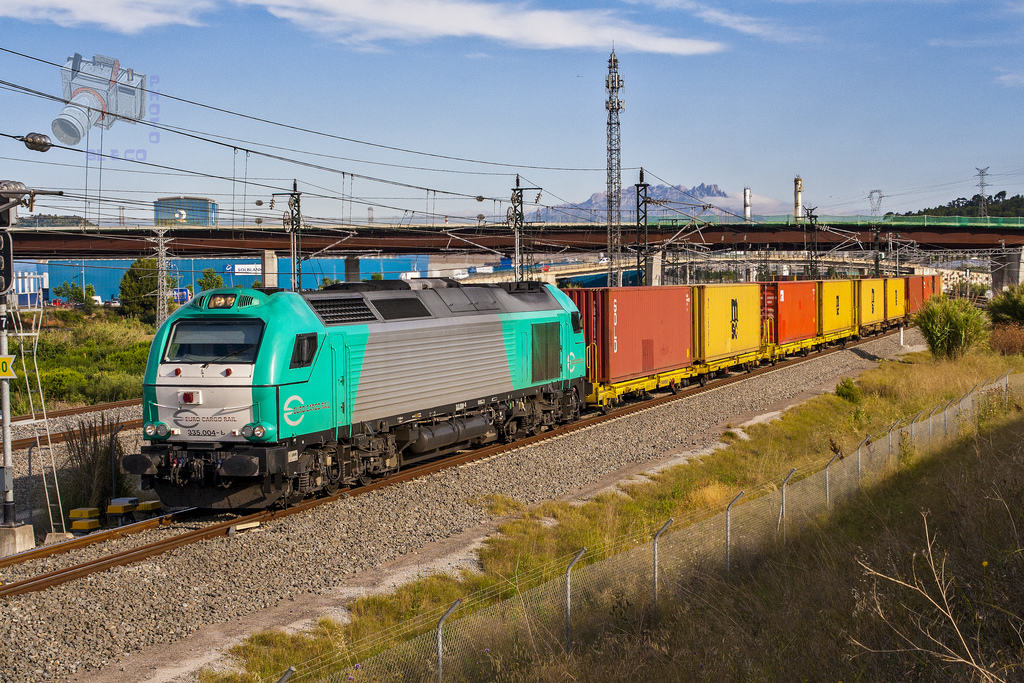Environmental sustainability is a central issue in regards to transportation and the logistics sector. Consumer transportation experts are in constant debate of what is the best way to improve efficiency, lower costs, reduce emission, and produce a smaller carbon footprint; be it gas-electric hybrids, alternative fuels, or straight electric powered transportation. However, with information changing on a daily basis, supply chain industry and logistics professionals must make sense of all claims made by consumer transportation experts.
For international moves that are not bound by land, the choice appears to be much simpler: if shipments have to cross an expanse of water, air or ocean must generally be used. This focuses the discussion of sustainability on domestic moves, and/or the domestic portions of international moves. This discussion is usually led by two modes of transportation: rail or truck.
While trucking dominates transportation logistics processes, rail is making an impact in the distribution sector. Due to rising costs of fuel, organizations throughout the United States are depending on trains to deliver their goods. Railway locomotives can move large orders at a faster pace and more efficiently than heavy-duty vehicles. In addition, they prove to be the more eco-friendly option.
Rail freights is the eco-friendly solution to transport good in a better way for the climate. Carbon dioxide (CO2) emissions are eight times less for rail freight than traditional trucking. In addition, rail freight is very efficient on land because it avoids congestion and guarantees safety. Another advantage of rail includes the reduction of exhaust emissions, which are generally highly concentrated in cities because of the cars.
Rail is more fuel-efficient than trucking. Although rail locomotives do pollute, it is much less than trucking. For example, replacing 300 tractor-trailers with one or two locomotives is going to provide less negative externalities in regards to the environment; therefore, locomotives are more beneficial in environmental terms. Overall, the big advantage is rail’s ability to transport large quantities of stuff over long distances.
In addition, freight requires a fraction of the labor, which translates into significant cost savings for the customer. For example, two individuals, an engineer and a conductor, can operate a locomotive pulling a train of 100 rail cars. A truck carries what a single rail car can carry, and each truck requires one driver. So you need 300 trucks and 300 drivers to transport the equivalent amount of cargo as one 100-car train.
CSX Transportation (a Class I railroad in the United States), along with others in the rail industry, repeatedly voice the claim that: trains can move one ton of freight nearly 500 miles on a single gallon of fuel. In addition, efficient use of fuel means less greenhouse gases or carbon emissions for the planet. The Environmental Protection Agency (EPA) estimates that moving freight by rail emits three times less nitrogen oxide and particulates per ton-mile than highway transportation. CSX also claims that shifting 10 percent of long-haul freight from the highway to rail would reduce annual greenhouse gas emissions by more than 12 million tons.
The transition from truck to rail is gaining momentum and will become more prevalent in the years to come. Investment in the locomotive industry is expected to produce cheaper, more flexible transportation options for participants in the supply chain. Overall, railroads are the most environmentally friendly way to move freight across land.
- 57shares
- 55LinkedIn




